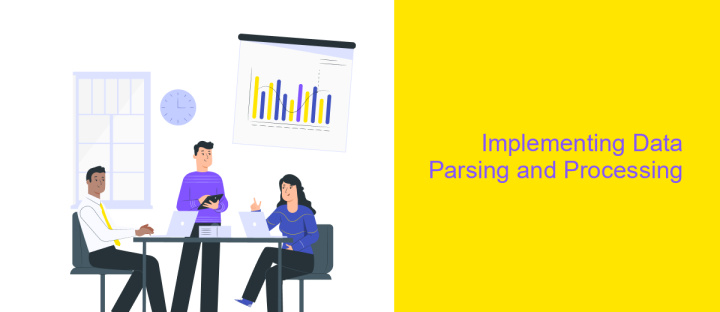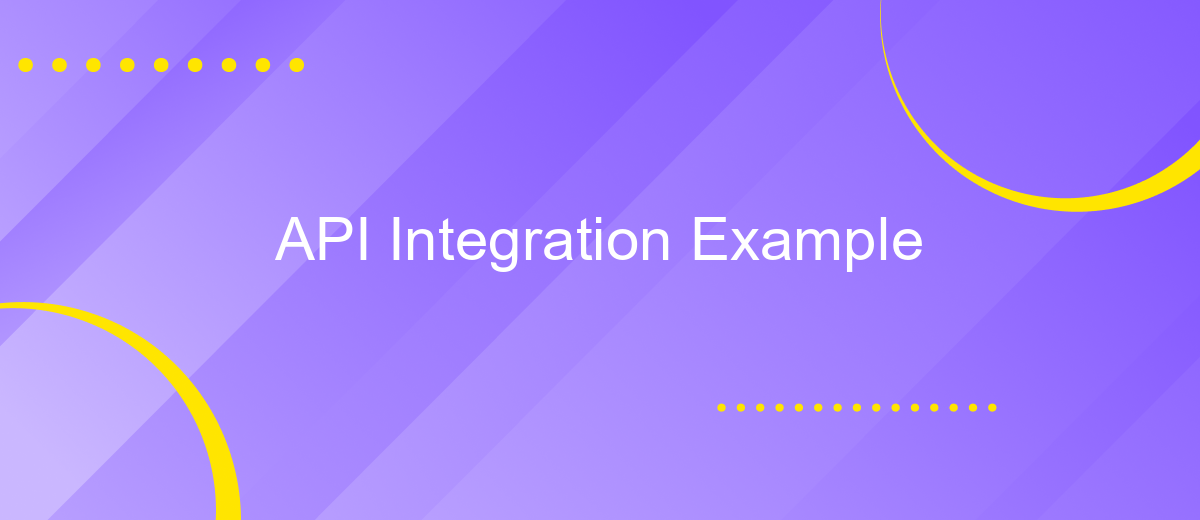API Integration Example
In today's digital landscape, API integration plays a crucial role in enhancing the functionality and connectivity of applications. By allowing different software systems to communicate seamlessly, APIs enable businesses to streamline operations, improve user experiences, and foster innovation. This article explores a practical example of API integration, demonstrating how it can be effectively implemented to optimize processes and deliver value across various sectors.
Introduction to API Integration
API integration is a critical aspect of modern software development, enabling disparate systems to communicate and share data seamlessly. By leveraging APIs, developers can enhance functionality, improve user experiences, and streamline processes across various applications. This integration allows businesses to harness the power of third-party services, leading to more efficient operations and innovative solutions.
- Expands application capabilities by connecting to external services.
- Facilitates real-time data exchange between different platforms.
- Reduces development time by utilizing pre-built functionalities.
- Enhances user experience through seamless feature integration.
- Promotes scalability and flexibility in application design.
Incorporating API integration into your development strategy is essential for staying competitive in today's digital landscape. It not only simplifies the process of adding new features but also ensures that your applications remain adaptable to evolving technological trends. By understanding and implementing effective API integration practices, developers can create robust, scalable, and interconnected systems that meet the dynamic needs of users and businesses alike.
Setting up the Development Environment

To begin setting up your development environment for API integration, first ensure you have the necessary tools installed. Start by installing a code editor like Visual Studio Code or Sublime Text, which will help you write and manage your code efficiently. Next, make sure you have Node.js and npm (Node Package Manager) installed, as these are essential for managing dependencies and running your application. Check your installations by running node -v and npm -v in your terminal to confirm they are correctly set up.
Once your basic tools are ready, consider using ApiX-Drive to simplify the integration process. This platform allows you to connect different APIs without extensive coding knowledge, streamlining the setup process. Create an account on ApiX-Drive and explore its features to automate data transfer between your application and other services. Additionally, ensure you have access to the API documentation of the services you plan to integrate. This will provide you with the necessary endpoints, authentication methods, and data formats required for successful integration.
Making API Requests and Handling Responses

When working with APIs, making requests and handling responses are fundamental tasks. To initiate a request, you typically use HTTP methods like GET, POST, PUT, or DELETE, depending on the action you wish to perform. It's crucial to understand the API documentation to know the required endpoints, parameters, and headers. Once the request is sent, the server processes it and returns a response, usually in JSON or XML format.
- Identify the API endpoint and method you need.
- Set up the request with necessary headers and parameters.
- Send the request using an HTTP client or library.
- Receive the response and check the status code.
- Parse the response data for further processing.
Handling responses involves checking the HTTP status code to determine if the request was successful. A status code of 200 indicates success, while codes like 404 or 500 signify errors. Parsing the response body is essential to extract useful information. Use libraries like Axios in JavaScript or Requests in Python to simplify these tasks, ensuring efficient API interaction.
Implementing Data Parsing and Processing

Data parsing and processing are critical steps in API integration, ensuring that the raw data received from an API is transformed into a usable format. This involves extracting relevant information from the API response, often in JSON or XML format, and converting it into a structured form that can be easily manipulated and analyzed. Efficient parsing and processing are essential for seamless data flow and accurate application functionality.
To implement data parsing, one must first understand the data structure provided by the API. This involves examining the API documentation to identify key data fields and their types. Once the data structure is clear, appropriate parsing libraries or tools can be utilized to extract the necessary information. Processing follows parsing, where the data is transformed to meet specific application requirements, such as filtering, aggregating, or enriching the data.
- Identify key data fields from API documentation.
- Use parsing libraries to extract relevant data.
- Transform data to fit application needs.
- Ensure data integrity and accuracy during processing.
By carefully implementing data parsing and processing, developers can ensure that their applications accurately reflect the data provided by APIs. This not only enhances the application's reliability but also improves user satisfaction by delivering precise and relevant information. Continuous monitoring and updating of parsing and processing methods are recommended to adapt to any changes in the API structure.
Testing and Debugging the Integration
Testing and debugging an API integration is a crucial step to ensure its seamless operation. Begin by verifying the API endpoints using tools like Postman or CURL to simulate requests and responses. This helps identify any immediate issues with data transmission or authentication. It's essential to check for correct data mapping and ensure that all required fields are being correctly populated. Additionally, set up logging to monitor requests and responses, which can provide insights into any unexpected behavior during the integration process.
For more efficient testing and debugging, consider using services like ApiX-Drive, which offers a user-friendly interface to connect and automate data flows between various applications. ApiX-Drive simplifies the process by allowing you to visually map data fields and set conditions for data transfer, reducing the chances of errors. If an issue arises, ApiX-Drive's detailed logs and error reports can help pinpoint the problem quickly, facilitating faster resolution. Regularly update and test your integration to adapt to any changes in the API or the connected services.
FAQ
What is API integration, and why is it important?
How can I integrate APIs without extensive coding knowledge?
What are some common challenges faced during API integration?
How do I ensure the security of my data during API integration?
Can API integration help automate my business processes?
Apix-Drive is a universal tool that will quickly streamline any workflow, freeing you from routine and possible financial losses. Try ApiX-Drive in action and see how useful it is for you personally. In the meantime, when you are setting up connections between systems, think about where you are investing your free time, because now you will have much more of it.

